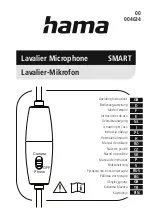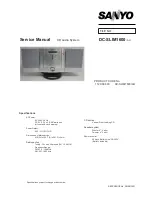12
Using the AirMic: Pt. 2 Getting Started
Connect any external microphones you wish to the transmitter/s, (this not compulsory
as there is a very capable condenser microphone built into the device).
Ensure the line out of the receiver is connected to the equipment you are recording
to, whether this be a digital camera, an Android phone, or an iPhone for example, (you
may need to purchase an adapter).
Ensure headphones are not worn when you connect your devices. Ensure all input
and output levels are turned down.
As a general rule, always turn on equipment
at low volumes in order to protect your ears as well as the equipment you are
using. Then, adjust to the required levels.
On the receiver, please note that Mic input, signal strength, and battery life
information of the transmitters populate two adjacent windows when two transmitters,
(and the receiver) are turned on.
If you have the standard AirMic Solo set (which has one transmitter) or are only using
one transmitter of your two transmitter set (AirMic Duo), Mic input, signal and battery
life information will populate the first window only.
When a second receiver is paired with the transmitter, the Mic input, signal and
battery life levels pertaining to this unit will display in the second window.
You should see matching information for both the receiver and the transmitter, once
paired.
For example, the Mic input level of your transmitter/s should be identical in the
corresponding window of the receiver.
Safety First!
The World Health Organization (WHO) suggests you should listen to your
headphones at a maximum volume level of 85 decibels (dB) for a maximum 8
hours. Scientists recommend a listening range of between 60- 80 dB.
Most MP3 players, phones, and other listening devices rise above the
recommended dB levels with headphones when you turn up the volume. They can
normally achieve 105 dB. If you listen at these levels, it should be for a short time (10
minutes), otherwise you risk permanent damage to your hearing.


















